
|
Astronomy Picture Of the Day (APOD)
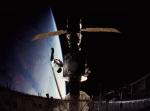 Construction of International Space Station Begins
Construction of International Space Station Begins
23.02.1999
Move over Mir, here comes the International Space Station. In December 1998, the crew of Space Shuttle Endeavour started construction by joining the U.S.-built Unity node with the Russian-built Zarya module. A close look at the above IMAX(r) photograph will reveal two astronauts working on Unity.
 NGC 1316: After Galaxies Collide
NGC 1316: After Galaxies Collide
22.02.1999
Astronomers turn detectives when trying to figure out the cause of unusual sites like NGC 1316. A preliminary inspection indicates that NGC 1316 is an enormous elliptical galaxy that started devouring a smaller spiral galaxy neighbor about 100 million years ago. Supporting evidence includes the dark dust lanes uniquely indicative of a spiral.
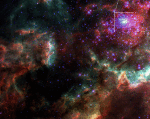 In the Center of 30 Doradus
In the Center of 30 Doradus
21.02.1999
In the center of 30 Doradus lies a huge cluster of the largest, hottest, most massive stars known. The center of this cluster, known as R136, is boxed in the upper right portion of the above picture.
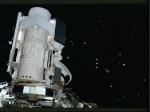 Astro 1 In Orbit
Astro 1 In Orbit
20.02.1999
In December of 1990, the Space Shuttle Columbia carried an array of astronomical telescopes high above the Earth's obscuring atmosphere to observe the Universe at ultraviolet and x-ray wavelengths. The telescopes, known...
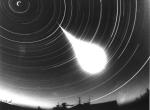 On The Trail Of A Fireball
On The Trail Of A Fireball
19.02.1999
This exceptionally bright fireball meteor trail was photographed with a fish-eye camera at a Czech Republic station of the European Fireball Network on January 21, 1999. Of the star trails visible in this night-long exposure, the bright short arc in the upper left is due to Polaris, the north star.
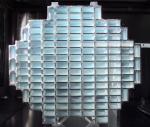 Aerogel For Stardust
Aerogel For Stardust
18.02.1999
On February 7th, this honey comb of aluminum cells filled with aerogel was launched on the STARDUST mission to interplanetary space. STARDUST's goal is to capture dust from a comet's tail and return to planet Earth - the first sample return mission to a comet!
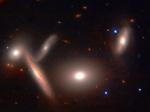 Hickson Compact Group 40
Hickson Compact Group 40
17.02.1999
Galaxies, like stars, frequently form groups. A group of galaxies is a system containing more than two galaxies but less than the tens or hundreds typically found in a cluster of galaxies. A most...
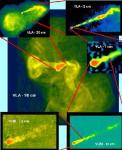 The Large and Small of M87
The Large and Small of M87
16.02.1999
The small core of elliptical galaxy M87 appears to be energizing its whole galactic neighborhood. Recent images from the Very Large Array (VLA) of radio telescopes indicate that huge bubbles of hot gas not only exist but are still being created. These bubbles measure 200,000 light-years across and surround the entire galaxy.
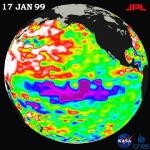 La Nina Earth
La Nina Earth
15.02.1999
La Niña is a temporary climate change caused by unusually cold water in the central Pacific Ocean. Cold water topping an unusually low sea level is shown as purple in the above false-color picture taken by the orbiting TOPEX/Poseidon satellite in mid-January.
 Dark Sky, Bright Sun
Dark Sky, Bright Sun
14.02.1999
In low Earth orbit there is not enough atmosphere to diffuse and scatter sunlight, so shadows are black and the sky is dark - even when the Sun shines. The harsh lighting produced this dramatic...
|
January February March April May June July August September October November December |
|||||||||||||||||||||||||||||||||||||||||||||||||